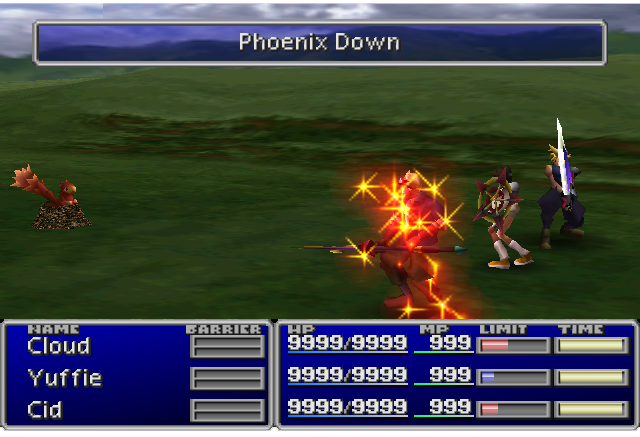Imagine you die. Suddenly. No explanation. Kablooey. You’re outta’ here. In the ground. Nice to know you. But you’re lucky. Your friend has phoenix down. He revives you. (If you’re unlucky, you don’t know what a phoenix down is so you die and this conversation is over.) Awesome. You’re back. Nice to see you. This [...]
Imagine you die. Suddenly. No explanation. Kablooey. You’re outta’ here. In the ground. Nice to know you.
But you’re lucky. Your friend has phoenix down. He revives you.
(If you’re unlucky, you don’t know what a phoenix down is so you die and this conversation is over.)
Awesome. You’re back. Nice to see you. This is wonderful! Until you die again, of course. Because you do. No explanation.
But you’re lucky (again). Your friend has another phoenix down. He revives you again.
Awesome. You’re back. Nice to see you. This is wonderful! Until you die again, of course. Because you do. No explanation.
See…
The phoenix down brings you back to life, but it doesn’t fix why you’re dying. If you have a clogged artery, you come back to life…only to have it clog again.

Resting an injury is similar to using a phoenix down.
When you get injured, you die. When you rest, you use a phoenix down. Resting helps reduce the pain, which is the feedback we associate with injuries.
But pain is a side-effect of an injury. Pain isn’t the injury itself. So, by resting, you’re treating the side-effect, not the injury.
And if you don’t treat the injury, there’s a 96.4% chance you’ll ram right into pain again because you didn’t fix the reason you were in pain. (All statistics are taken from the National Journal of National Journals.)
Without pain ≠ Without problem
So when you’re dealing with an injury, ask yourself:
Am I fixing the pain? Or am I fixing the problem that’s causing the pain?
Assuming the injury isn’t random (sometimes injuries are random), look for the reason. Deal with the pain, yeah, but don’t stop there.
Where there is smoke, there’s fire. You have to put out the fire, but you can’t be blind to everything else going on. If you’re too focused on the flames, you miss the arsonist sprinting out of the back door and into the woods.
As long as the arsonist is alive, your house is in danger.